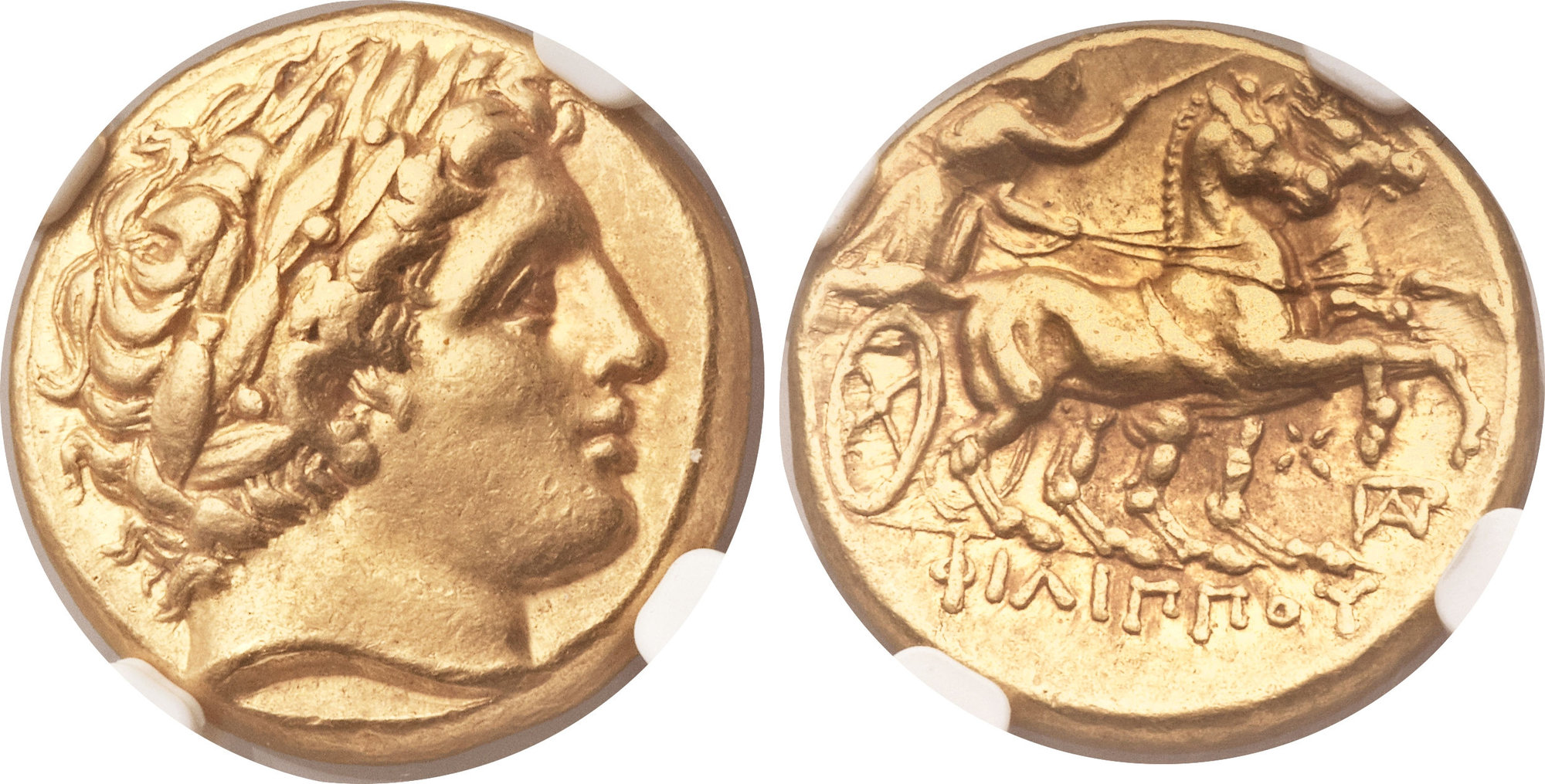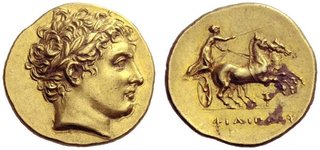
Alexander is by far the greatest Classical Hero of well recorded times. His education in the arts and letters inspired him to tracvel with a retinue of writers and artists. Thus his exploits were chronicled by contemporaries Ptolemy, Heironymus, Nearchus (Alexander's admiral), Aristobulus (Alexander's chief engineer) and Calisthenes (Aristotle's nephew) whose writings, though lost, were read and synthesized by Arrian of Nicomedia, much of whose work survives to this day. Herodotus , Diodorus, and Quintus Curtius roughly contemporay to Arrian, also wrote histories that are still partially extant, also drawing on the writings of Alexander's contemporaries.
Immediately following Alexander's death, his half-brother Philip, his mother Olympia, and his Generals: Ptolemy, Seleukos, Antigonos, Peithon, Lysimachos and Perdikass fought bitterly over the now divided empire. Much of this discord is also well recorded by contemporary or near contemporary writers,
Unfortunately what is not recorded is a contemporary history of the coinage. Without a written record, attributions and timelines are speculative - not historical.
To some extent, though, the coins themselves can be read as documents. They include names of issuing authorities, mintmarks, and, very occasionally, dates. From these we can infer a somewhat accurate reconstruction - though with far less certainty then you might find in certain numismatic circles.
Coins are also stylistic documents. The more refined the style the easier it is to identify it with a particular artist or group of artists.
Alexander's image was recorded by some of the greatest artists of the period. He traveled with renowned Sculptor Lyssippos, and the renowned gem carver Pyrgoteles.
The coin engraving during the period immediately following his death was certainly heavily influenced by Alexander's court artists who surely trained some of the engravers who went on to carve masterpieces at the Abydos, Lampsakos, Kolophon and Magnesia mints. Fine style coins were also minted at the Pella and Amphipolis mints in Thrace. both before and after Lysimachus took control there.
Much of the portraiture of this period is unrivaled.
Some of the coins have been positively identified as displaying portraits of Alexander. The coins of Lysimachus have portraits which are identified being of Alexander though many clearly are not. Some are quite beautiful and seem to be modeled on contemporary images of Alexander.:

Some are probably meant to be Alexander, but were engraved by artists of lesser ability so it's tough to tell if they are Alexander or perhaps some contemporary ruler - or perhaps the features are conflated:

Some do not appear to be Alexander at all, and almost certainly represent some later diginitary:

But in many ways the most intriguing Alexander portraits were engraved under the auspices of Philip III, Alexander's half brother, about whom little is known. He avoided military service in an era in which it would have been unthinkable to do so unless somehow infirm, so it is supposed that he must have been. And it seems certain he reigned under the influence of Olympia. Otherwise all we know is that he employed a stable of terrific artists.
Certainly the finest Alexander portrait was carved in Philip's name:

This is thought to have been modeled on Alexander's death mask. There is no proof of that but the skill of portraiture certainly goes beyond anything seen before this coin. It was produced at the Kolophon and Magnesia mints from the same obverse die almost certainly immediately after the death of Alexander.. But other coins bearing portraits with strikingly similar features came out of these two mints as well as Abydos and Lampsakos mints during the same period of time.
All these mints are on the Western coast of present day Turkey which may well have served as Philip's main area of power. And, of course, Philip's claim to power lay in his lineage as he was not a military man, so placing Alexander's portrait on his coinage was a way of making his case for succession.
Other quite beautiful dies from this quartet of mints that appear to all be portraying Alexander the Great include:
Much of the portraiture of this period is unrivaled.
Some of the coins have been positively identified as displaying portraits of Alexander. The coins of Lysimachus have portraits which are identified being of Alexander though many clearly are not. Some are quite beautiful and seem to be modeled on contemporary images of Alexander.:

Some are probably meant to be Alexander, but were engraved by artists of lesser ability so it's tough to tell if they are Alexander or perhaps some contemporary ruler - or perhaps the features are conflated:

Some do not appear to be Alexander at all, and almost certainly represent some later diginitary:

But in many ways the most intriguing Alexander portraits were engraved under the auspices of Philip III, Alexander's half brother, about whom little is known. He avoided military service in an era in which it would have been unthinkable to do so unless somehow infirm, so it is supposed that he must have been. And it seems certain he reigned under the influence of Olympia. Otherwise all we know is that he employed a stable of terrific artists.
Certainly the finest Alexander portrait was carved in Philip's name:

This is thought to have been modeled on Alexander's death mask. There is no proof of that but the skill of portraiture certainly goes beyond anything seen before this coin. It was produced at the Kolophon and Magnesia mints from the same obverse die almost certainly immediately after the death of Alexander.. But other coins bearing portraits with strikingly similar features came out of these two mints as well as Abydos and Lampsakos mints during the same period of time.
All these mints are on the Western coast of present day Turkey which may well have served as Philip's main area of power. And, of course, Philip's claim to power lay in his lineage as he was not a military man, so placing Alexander's portrait on his coinage was a way of making his case for succession.
Other quite beautiful dies from this quartet of mints that appear to all be portraying Alexander the Great include:



\




Not all of these have been identified by numismatists as Alexander, but one would have to be blind not to see the similarities. And in fact, these portraits are far more similar than most of those portraying Alexander on the Lysimachus staters. While some may strike a particular viewer as more accomplished than others, they speak to a group of prodigiously skilled engravers who almost appeared to competing to achieve the finest portrait of Alexander.
And several other characters are portrayed in very fine style from this period at these mints. But thus far their identities can only be guessed at:






In all, this is certainly a tremendous era of portraiture, the likes of which is not seen again in coinage - or any extant artform - until the golden age of Rome.





In all, this is certainly a tremendous era of portraiture, the likes of which is not seen again in coinage - or any extant artform - until the golden age of Rome.
No comments:
Post a Comment